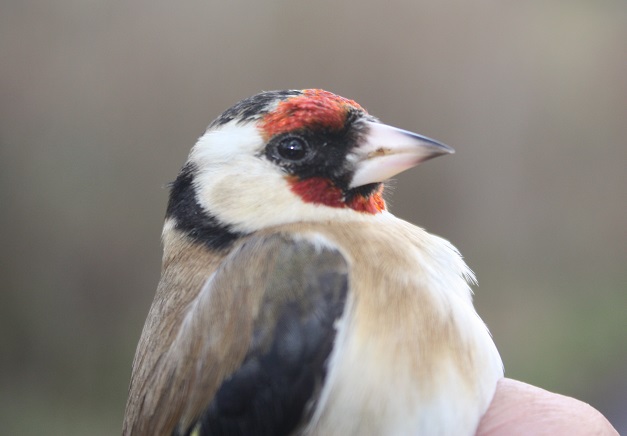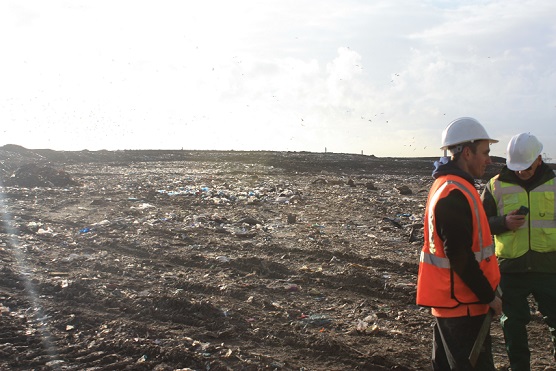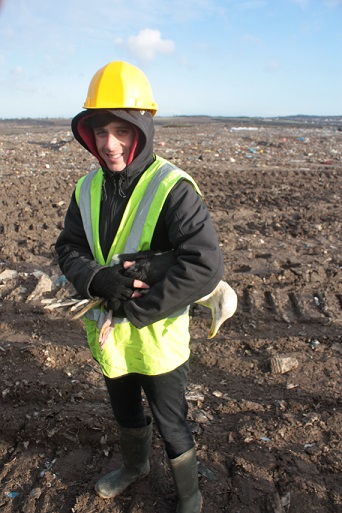Red Lodge Plantation: Friday, 24th February 2017
I have been having a bit of an issue at Red Lodge recently. Because the main track has been severely damaged by the machinery used for the thinning operations over the last year-and-a-half, I can no longer get my car the kilometre into the wood where my feeding station is set. It is a long trek to get all the equipment and the ringing station in place for a session, so a few weeks ago I moved the feeding station to a position just a couple of hundred metres away from where we park the cars. The feeding station had been in place for 5 years with no problems of theft or vandalism. The new position has clearly upset somebody: 3 days after the bird table was dug into its new position I found it had been uprooted and put to one side. Thinking it might have just been blown over in this interminable bad weather, I dug it back in a few metres back from where it was before. The next week, when I went to top up the feeders, no bird table. I eventually located it in the middle of a nearby pond. On the basis that I don't give in to bullies, I dug it back in, with the pole considerably deeper into the subsoil.
Anyway, I was planning a session for this morning and went to top up the feeders yesterday and, presumably because you have to be pretty daft to go walking in the woods when it is blowing up to 60mph (trees are down in the wood), the table was still in place. So, this morning I set my nets and, as I was finishing setting the last net, adjacent to the bird table, a 50-something male, clad in something that looked remarkably like a dry suit, came haring through the woods on his mountain bike, on a collision course for my nets and the table. I stopped him, pointed out where my nets were and the work that goes on and why I supplementary feed in the wood. I raised the problems of mindless petty vandalism on Forestry Commission sites. I dropped into the conversation that the FC have said they will put up covert camera coverage and alert the police if it happens again. He protested mightily that he would never have done anything like that. Funnily enough, I got the feeling that the problem might have been resolved.
As this was a solo session, I only set two 18m and one 9m nets. It still ended up being a lot of work, with large numbers of Blue, Great and Coal Tits turning up. Anybody who has been ringing for any length of time will know of the "fun" of extracting large numbers of Blue Tits, particularly when on your own, and when a sizeable proportion decide to double pocket or spin, or combine them together. Having moaned a bit, it was actually an excellent session. The highlight had to be the first Siskin caught in the wood since I started ringing there in autumn 2012. This follows hard on the heels of the first Lesser Redpoll caught in the wood in December 2016. Perhaps one of the impacts of the thinning of the woodland is to have made it more attractive to winter finches.

As well as the Siskin, I was lucky enough to catch a couple of Great Spotted Woodpeckers, which makes five for the year so far: we caught only nine in the whole of 2016. We have only caught one previously in Red Lodge, in 2015. There was a cracking male Nuthatch. Sexing Nuthatches is very easy: the male has dark brick red edges to its undertail coverts and also on the body wall adjacent to the axillaries; the female has paler, buff fringing.

The list for the day was: Great Spotted Woodpecker 2; Nuthatch 1; Blue Tit 18(11); Great Tit 9(10); Coal Tit 8(3); Marsh Tit (1); Long-tailed Tit (1); Wren 1(1); Robin 1(1); Blackbird 1; Goldcrest 1; Chaffinch 1; Siskin 1. Totals: 44 birds ringed from 11 species; 28 retrapped from seven species, making 72 birds processed from 13 species.
Several of the Great Tits were being fed on by ticks, which I removed with my needle forceps. It is astonishing how the birds do not struggle when you are doing this - almost as if they know you are doing something to benefit them. ST










